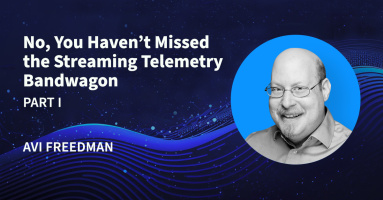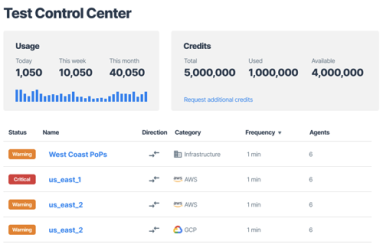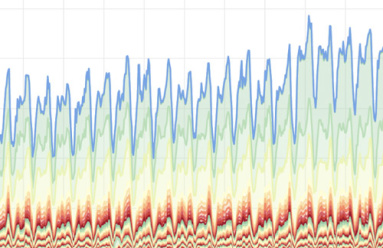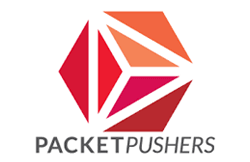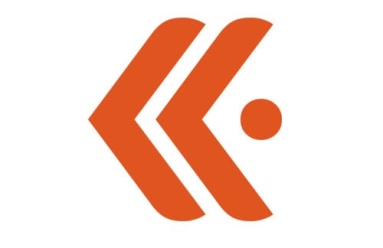Posts by Avi Freedman

























About Avi Freedman
Avi is the co-founder and CEO of Kentik. He has decades of experience as a leading technologist and executive in networking. He was with Akamai for over a decade, as VP Network Infrastructure and then Chief Network Scientist. Prior to that, Avi started Philadelphia’s first ISP (netaxs) in 1992, later running the network at AboveNet and serving as CTO for ServerCentral.
Kentik CEO and co-founder Avi Freedman explains why observability is not enough in the age of AI.
Cloud costs are spiraling out of control at companies of all sizes. Here’s how to not let your cloud infrastructure costs handcuff your business.
Streaming telemetry holds the promise of radically improving the reliability and performance of today’s complex network infrastructures, but it does come with caveats. In the first of a new series, Kentik CEO Avi Freedman covers streaming telemetry’s history and original development.
In order to answer any question, network observability requires a broad range of telemetry data. It takes a capable platform to make the data useful. In this 4th part in the network observability series, Avi Freedman describes requirements for the data telemetry platform.
With increasingly complex on-premises and cloud hybrid environments, managing the network has never been so tough. And that keeps network pros up at night.
In part 3 of the network observability series, Kentik CEO Avi Freedman discusses the different categories telemetry data. Avi shows how a complete network observability solution can answer an exponentially broader range of questions.
In part 2 of the network observability series, we tackle the first key to the input needed for network observability — from what networks and network elements we gather telemetry data.
The goal of network observability is to answer any question about your network infrastructure and to have support from your observability stack to get those answers quickly, flexibly, proactively, and interactively. In this post, Kentik CEO Avi Freedman gives his thoughts on the past, present, and future of network observability.
What is synthetic testing, and where do point solutions fail? In this blog post, Kentik Co-founder and CEO Avi Freedman discusses network performance testing and why Kentik designed an autonomous and affordable synthetic monitoring capability that is fully integrated into our network observability platform.
At Kentik, we’re always interested in monitoring trends in network traffic. This helps to inform our community and customers globally about potential opportunities and threats to network operations. In this ongoing blog post, we’ll provide updates to trends in traffic in correlation with COVID-19.
We’re very excited to share that KDDI, one of the world’s largest telecommunications companies, has selected the Kentik platform for network planning, operations, and to protect their key network assets and services. Read about the reasons that KDDI chose Kentik and why we’re so excited about this announcement.
Cisco’s late-January acquisition of AppDynamics confirms what was already evident from Kentik’s experience in 2016, which is that effective visibility is now recognized industry-wide as a critical requirement for success. AppDynamics provides APM, the full value of which can’t be realized without the modern NPM offered by Kentik Detect. In this post we look at how Kentik uniquely complements APM to provide a comprehensive visibility solution.
Avi Freedman recently spoke with Ethan Banks and Greg Ferro of PacketPushers about Kentik’s latest updates, which focus primarily on features that enhance network performance monitoring and DDoS protection. This post includes excerpts from that conversation as well as a link to the full podcast. Avi discusses his vision of appliance-free network monitoring, explains how host monitoring expands Kentik’s functionality, and gives an overview of how we detect and respond to anomalies and attacks.
Kentik recently launched Kentik NPM, a network performance monitoring solution for today’s digital business. Integrated into Kentik Detect, Kentik NPM addresses the visibility gaps left by legacy appliances, using lightweight software agents to gather performance metrics from real traffic. This podcast with Kentik CEO Avi Freedman explores Kentik NPM as a game-changer for performance monitoring.
In our second post related to BrightTalk videos recorded with Kentik at Cisco Live 2016, Kentik CEO Avi Freedman talks about the increasing threats that digital businesses face from DDoS and other forms of attacks and service interruptions. Avi also discusses the attributes that are required or desirable in a network visibility solution in order to effectively protect a network.
BGP used to be primarily of interest only to ISPs and hosting providers, but it’s become something with which all network engineers should get familiar. In this conclusion to our four-part BGP tutorial series, we fill in a few more pieces of the puzzle, including when — and when not — it makes sense to advertise your routes to a service provider using BGP.
Kentik CEO Avi Freedman joins Ethan Banks and Chris Wahl of the PacketPushers Datanauts podcast to discuss hot topics in networking today. The conversation covers the trend toward in-house infrastructure among enterprises that generate revenue from their IP traffic, the pluses and minuses of OpenStack deployments for digital enterprises, and the impact of DevOps practices on network operations.
In this post we continue our look at BGP — the protocol used to route traffic across the interconnected Autonomous Systems (AS) that make up the Internet — by clarifying the difference between eBGP and iBGP and then starting to dig into the basics of actual BGP configuration. We’ll see how to establish peering connections with neighbors and to return a list of current sessions with useful information about each.
BGP is the protocol used to route traffic across the interconnected Autonomous Systems (AS) that make up the Internet, making effective BGP configuration an important part of controlling your network’s destiny. In this post we build on the basics covered in Part 1, covering additional concepts, looking at when the use of BGP is called for, and digging deeper into how BGP can help — or, if misconfigured, hinder — the efficient delivery of traffic to its destination.
Cisco’s announcement of Tetration Analytics means that IT and network leaders can no longer ignore the need for Big Data intelligence. In this post, Kentik CEO Avi Freedman explains how that’s good for Kentik, which has been pushing hard for this particular industry transition. Cisco’s appliance-based approach is distinct from the SaaS option that most customers choose for Kentik Detect, but Tetration’s focus on Big Data analytics provides important validation that Kentik is on the right track.
NetFlow and IPFIX use templates to extend the range of data types that can be represented in flow records. sFlow addresses some of the downsides of templating, but in so doing takes away the flexibility that templating allows. In this post we look at the pros and cons of sFlow, and consider what the characteristics might be of a solution can support templating without the shortcomings of current template-based protocols.
NetFlow and its variants like IPFIX and sFlow seem similar overall, but beneath the surface there are significant differences in the way the protocols are structured, how they operate, and the types of information they can provide. In this series we’ll look at the advantages and disadvantages of each, and see what clues we can uncover about where the future of flow protocols might lead.
Border Gateway Protocol (BGP) is a policy-based routing protocol that has long been an established part of the Internet infrastructure. Understanding BGP helps explain Internet interconnectivity and is key to controlling your own destiny on the Internet. With this post we kick off an occasional series explaining who can benefit from using BGP, how it’s used, and the ins and outs of BGP configuration.


